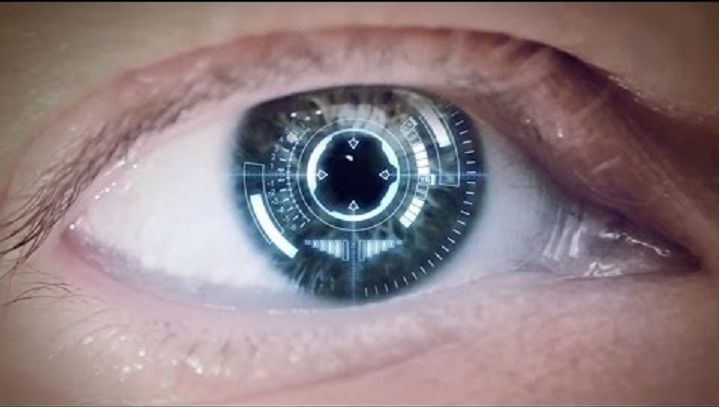
If there is one thing that has defined technological progress in the past 50 years, it would be the ongoing trend towards miniaturization and ergonomics. From computer chips that turned bulky machines that occupied entire rooms into personal computers to microelectronics that have allowed for personal entertainment devices, the drive to make technology more light-weight, personal and portable is undeniable.
This drive is certainly at the heart of the latest industry trend, which is the development of wearable technology. Whether it's smartwatches, smart rings, smart glasses, wristbands, or the explosive growth in recent years of bionic prosthetics, cybernetic devices and biomechanical implants, it is clear that we are moving into an era where technology that is seamlessly integrated into our lives is the norm.
Hence why Intel launched the Make It Wearable Challenge. Announced back at the 2013 Consumer Electronics Show, this incentive-based competition - which offered a total of $1.3 million USD in prizes - was aimed at bringing students, designers, engineers and inventors together with industry professionals to come up with ideas for wearable devics and ubiquitous computing.

The Challenge, which ran from January to November 2014, involved two competitions. The first was the VISIONARY track, where teams were required to submit futuristic ideas that did not involve prototypes. It featured 5 stand-alone rounds where submissions were evaluated based on their compelling nature, 5 finalists were selected, and an award of $5000 was issued to each.
The second competition, known as the DEVELOPMENT track, consisted of three rounds and focused on concepts that were both innovative and feasible. In the first round, all subsmissions were evaluated and 40 contenders were selected to advance to round 2 (the semi-finals). Of these, 10 teams were selected to move onto round 3 (the finals).
These 10 teams were given both expert support and an awarded of $50,000 to developed their ideas into finely-tuned business plans. The winning team, who's concept was deemed the most innovative, feasible and practical, was awarded the grand prize of $500,000.
Ultimately, the aim of the Challenge was to bring inventors together with industry professionals and sponsors to not only develop new concepts, but to foster a dialogue about the state of wearable technology. Of particular interest were the questions of what it is, where it is going, how it can be made to blend into people's lives and improve them in meaningful ways.

The winner of the Challenge, which was announced in early November, was team USA for the Nixie flying, wearable camera. This small drone, which user's can wear on their wrist like a watch, can also be deployed with a sweep of the arm to take pictures and video. The tiny quadcopter-like device then returns to the user, in what is appropriately terms boomerang mode, where it sync's with their mobile phone to share any pictures and videos it obtained.
The drone can also be set to hover or follow me mode, where it will either take pics and footage in a 360° arc, or monitor the user as they go about their business. Because of its flying capabilities, ability to sync with existing devices, and different modes of operation, the inventors see it as being well-suited to hands-free activities like biking, rock climbing, hiking, and adventure sports.
However, the potential for security is also there, thanks to things like the follow me mode which could allow it to keep track of the user as they walk home through potentially unsafe areas. In addition, the Nixie could also act as a deterent to criminals, who would less likely to attack someone knowing that their would-be vicimt is being actively recorded. With the $500,000 prize secured, the team now intends to bring their design to market.

Second place went to team UK for the development of their Open Bionics 3D-printed prosthetic, robotic hand. Compared to other bionic prosthetics - which can cost anything from $2000 to $100,000 due to the more expensive machining process used to create them - their low-cost robotic hand is able to replicate advanced functionality at a cost of under $1000.
Third place went to team Germany for their ProGlove design, a production tool that combined work gloves with sensor wrist bands. This device was designed for use in the manufacturing setting, helping to lower production costs and optimize levels of productivity among factory workers, but could also find uses in commercial applications like 3D computer-assisted design (CAD) and construction.
Other entries that were selected as finalists included the Wristify - a wearable, personal climate control device; the Snowcookie - a device designed to monitor fitness and provide coaching to skiers; and the BabyGuard bellyband - a wearable devices that allows expectant mothers to monitor the heartrate, activity, and general well-being of their baby.
All in all, the teams that took part in this Challenge provided a good rundown of the possibilities wearable tech has to offer. Between personal drones, prosthetic devices, industry tools and wearable healh monitors, the Challenge provided all with a glimpse of a coming age where technologically has found new ways to merge with everyday living, providing opportunities for greater convenience and smart living.
In the meantime, be sure to check this promotional video of the Make it Wearable Challenge (courtesy of The Creator's Project), as well as the videos of the finalists below:
The Nixie wearable, flying camera drone:
The Open Bionics 3D-printed, robotic, prosthetic hand:
And the ProGlove Production Tool:
Sources:
- makeit.intel.com/
- makeit.intel.com/finalists
- thecreatorsproject.vice.com/blog/make-it-wearable
- www.comsol.com/blogs/meet-winners-intels-make-wearable-challenge/
- www.wired.co.uk/news/archive/2014-11/03/nixie-drone-wins-intel-wearable-competition
- www.ibtimes.co.uk/intels-make-it-wearable-challenge-shines-light-ingenuity-ces
- intel.synapticdigital.com/Intel-Video-Library/intels-make-it-wearable-challenge/
- www.techtimes.com/articles/19414/20141104/wristband-drone-grabs-intel-make-it-wearable-challenge-500-000-top-prize.htm
- www.openbionics.org
- www.proglove.de
Image Credits:
- Top Image: makeit.intel.com
- MIWC: scoop.intel.com
- Nixie: thecreatorsproject.vice.com
- Open Bionics: newsroom.intel.com








